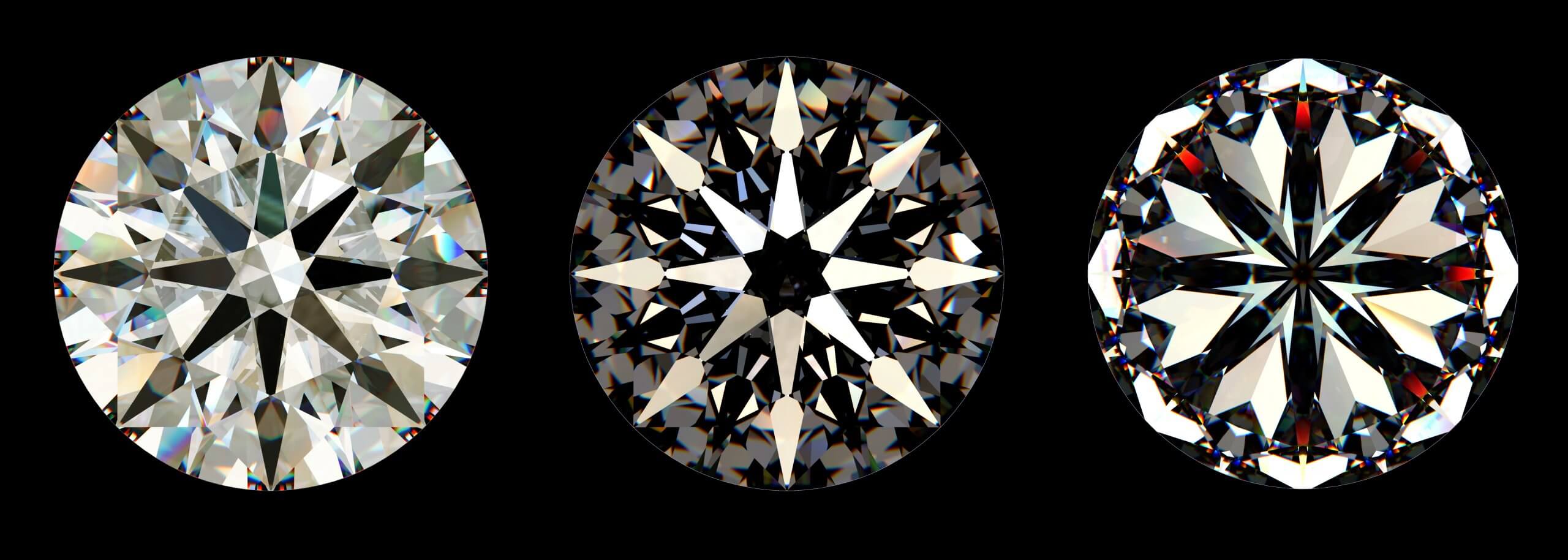The Importance of a Diamond Cut
Key Takeaways
- Cut is by far the most important of the Four Cs. While Cut and Color leave some ‘wiggle room’ for shoppers of different budgets, Cut is nowhere near as open to interpretation.
- Since Cut refers not only to the overall quality of the diamond’s shape, but also to the way in which the facets are arranged across the diamond’s surface, it represent the key deciding factor behind a diamond’s ability to sparkle.
- For any shopper, maximizing light performance is key. A bad cut can easily cause a diamond to look dull and listless, which doesn’t quite scream “Marry me!” in the same way.
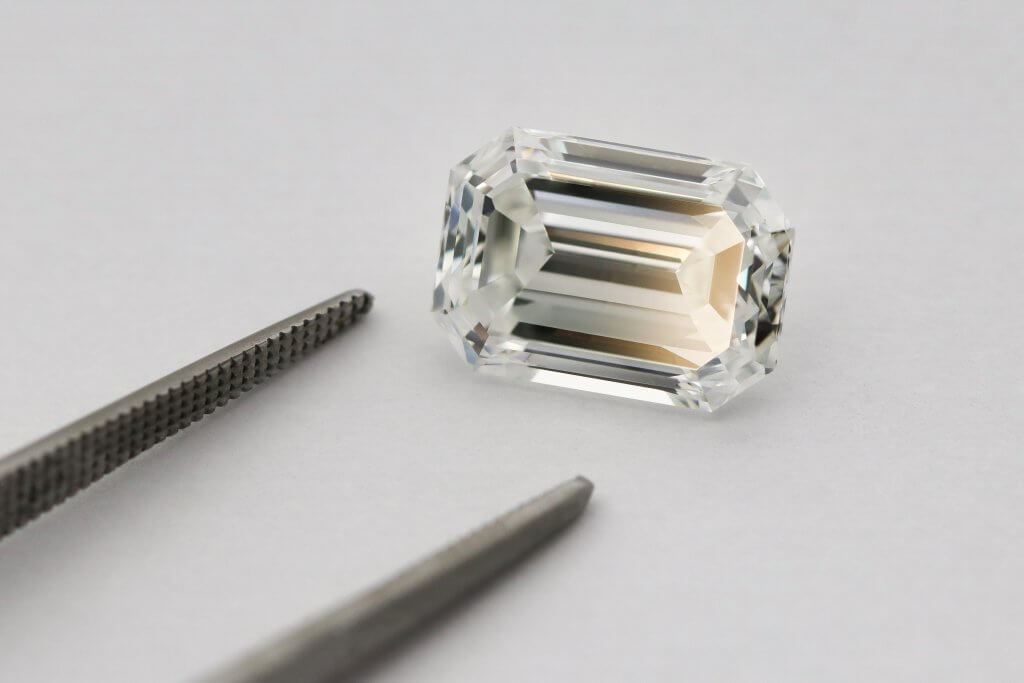
It doesn’t take an expert to know that diamonds do not come out of the ground looking the way they do by the time they make it to the jeweler’s table. What does take an expert, however, is recognizing the potential a rough diamond holds – and, of course, how to turn that potential into a reality.
Every diamond you come across during your search will have spent hours under a series of highly specialized tools capable of turning an unassuming, dull, and irregularly shaped stone into an impeccably proportioned, symmetrical and brilliant diamond ready to place on the finger of your future bride.
Nevertheless, just because a diamond has been cut and polished, that’s not to say its worthy of your money. Diamond Cut is a complex subject, and one that it is absolutely essential to understand and consider before you make any commitments.
What Does Cut Mean in a Diamond?
Cut refers to a number of interrelated features, such as proportion, symmetry, polish, and depth.
Any diamond shape, from the classic Round Brilliant to the highly modern Princess, needs to be cut to some pretty specific proportions in order to create a good light performance and, put simply, to look right. A poorly proportioned Round Brilliant, for instance, could look very squat or very narrow and, even if you don’t consider yourself to be familiar with the diamond shapes, the flaws can be highly obvious.
Similarly, the process of polishing a diamond might leave some unsightly marks and flaws on the surface. The diamond’s face-up appearance might look ‘off’ due to poor symmetry or an uneven shape, or it might appear dull and lifeless alongside other diamonds due to an oversized table.
All of these possibilities – and more – are addressed within the cut category, which happens to be the first of the Four Cs every jeweler wants you to understand before you make a decision.
Is Diamond Cut the Same as Shape?
No, shape refers to the specific form a diamond is cut into. A few examples of this are the Round Brilliant, the Emerald, and the Cushion – although these are often referred to as the ‘different diamond cuts.’
While the term ‘cut’ may be used interchangeably a lot of the time, it is often easy to tell the difference – primarily because cut is what’s graded within the GIA Report, while shape is merely listed as one of the diamond’s key features.
It’s also important to note that the diamond’s shape will affect how it is graded. While Round Brilliant diamonds are assigned a specific grade for cut, as well as separate grades for symmetry and polish, other diamond shapes are only assigned grades for those two features, and not a comprehensive cut grade.
The GIA studied 70,000 Round Brilliant diamonds in order to develop their methodology for assigning a cut grade to this popular shape.
Cut
Even if you’re not planning on investing into a Round Brilliant diamond, it can be helpful to understand the factors that are considered when GIA graders assign this cut – and how they will need to relate to your own appraisal of any diamond you pick.
Does Cut Grade Matter?
Yes, Cut is arguably the most important of the Four Cs to get right.
One of the key reasons why Round Brilliant diamonds are as popular as they are is down to the fact that they offer more sparkle than any other diamond shape. They offer truly spellbinding light performances of fire, brilliance, and scintillation and, when cut to a high standard, will appear to come to life everytime the light hits upon their surface.
The key ingredient there, however, is a high standard of cut. Not every Round Brilliant diamond created is cut well – but it is essential that every Round Brilliant diamond you consider is.
We wouldn’t talk about the Four Cs as much as we do if any one of them were not important. Cut, color, clarity and carat are all going to be your top considerations throughout the diamond buying process, and none of them can afford to be relegated to the ‘Don’t Worry’ pile.That said, clarity, color and carat weight all offer much more scope for buyers looking to find a beautiful diamond that fits with their budget. For instance, while VVS1 is considered the ‘ideal’ for diamond jewelry, diamonds from the VS and SI grades can appear just as beautiful to the naked eye. Similarly, while D color diamonds can’t be beat on paper, they can be rivalled from diamonds with color grades as low as G, H, I and J.
Cut is a little less obliging. Jewelers will always recommend shoppers stick to the Excellent and Very Good grades, and never dip below, since this can have a profound impact on the diamond’s sparkle and brightness
So, yes, cut matters – and it matters a lot.What Are the Cut Grades?
Round Brilliant diamonds are graded for cut quality on the following scale:
| Excellent | Very Good | Good | Fair | Poor |
The most important thing to understand about this scale is that it covers a range of features concerning cut quality, and that any Round Brilliant diamond’s cut grade is determined based on numerous components – not one single feature….
How Does the GIA Grade Cut?
The subject of cut quality is predicated on seven factors including brilliance, scintillation and weight ratio, and the GIA takes all of these factors – and more – into account as they grade the cut quality of Round Brilliant diamonds.
Barring polish and symmetry, each of the seven factors involved in determining cut grade are noted down in order, before the lowest grade is picked out and used to determine the grade. If, for instance, the diamond receives a grade of Very Good for brightness, fire, scintillation, and weight ratio and a grade of Fair for durability, then the cut grade will be Fair.
However, if the diamond receives a grade of Excellent for brightness, fire, scintillation, weight ratio and durability, and a grade of Fair for polish and symmetry respectively, it will still be given an Excellent cut grade.
This is why it’s important to study the GIA’s full report, and to know how to extrapolate the most relevant information from it.
Which is the Best Cut Grade?
Excellent and Very Good represent the best cut grades – and the only ones we would ever recommend our readers invest into.
Unlike clarity and color, cut offers very little leeway for buyers. Yes, you can save many thousands of dollars by turning to SI2 diamonds instead of VVS1 diamonds, or by shopping from the Near Colorless grades rather than the Colorless grades but, when it comes to cut, we would never recommend taking the same open-minded approach.
The main reason behind this is the fact that a poorly cut diamond won’t sparkle like it should – and we’re willing to bet that, for you, finding a sparkly diamond is pretty much synonymous with finding a good diamond.
Also, barring the fact that dull and lifeless diamonds just don’t scream ‘romance’ like the ultra-brilliant, ultra-fiery diamonds do, a poor cut can just look off. It doesn’t take an expert to recognize a wonky circle – and, in a poorly cut diamond, that’s exactly what you see each time you look down on it.
According to the GIA, an Excellent cut grade refers to diamonds with the highest levels of brilliance and fire, while a Very Good cut grade refers to diamonds that appear to offer just about as much brilliance and fire to the naked eye.
If you go any lower on the cut scale, you’ll start to encounter a lot of diamonds with a lot less sparkle.
Is the Round Brilliant Durable?
In theory, yes. Not only is it made out of the hardest natural substance on the Mohs scale, but a Round Brilliant diamond features a pretty sturdy shape with no sharp corners, like those found on the Princess cut and Marquise cut.
However, a poor cut can make a diamond far more vulnerable to some pretty major damage, and that’s why the GIA take this – specifically, the strength offered by the girdle – into consideration when grading a Round Brilliant diamond’s cut.
The girdle is the widest part of the diamond, between the crown and the pavilion, where the facets of one are intended to line-up with the facets of the other. While, away from the microscope, it may appear to come to a very sharp and precise point, this is actually considered less than ideal for a diamond of any shape, as these edges (or corners) can easily chip or crack.
An excellent Brilliant Round diamond will feature a girdle of Thin to Slightly Thick. An extremely thin girdle is simply undesirable, and the sign of a poor cut lacking vital durability.
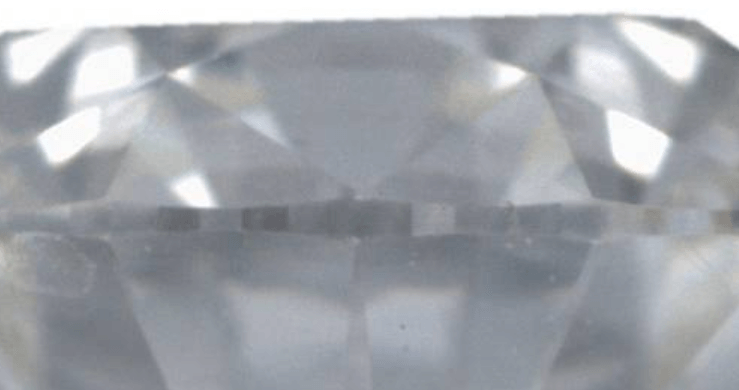
How is a Diamond’s Weight Ratio Graded?
GIA graders use a pretty complicated equation based on the diamond’s weight and average girdle diameter.
The most important thing to understand about this aspect is that, no matter the diamond’s carat weight, it should always appear to represent its actual weight.
The easiest way to understand this is to consider the importance of a diamond’s face-up appearance – or, more specifically, what you see when you look straight down at the diamond’s table and crown. Since this is the part of the diamond you’ll be looking at when it’s set within a ring, it stands to reason that it’s the most important part – and not least of all because this is where most light is supposed to enter and exit the diamond for maximin sparkle.
A 3 carat diamond won’t be worth much if an overwhelming proportion of its weight is held in its lower half – the pavilion – rather than its face-up appearance. For all its extra weight, it simply won’t appear anywhere near as big as other 3 carat diamonds with better weight ratios – and won’t achieve a great sparkle, either.
For these reasons, it’s no surprise that we would never recommend anyone opt for a diamond with a weight ratio graded below ‘Very Good.’
How Is Proportion Graded?
No, as one of the GIA’s key findings during their research into the Round Brilliant shape is the fact that there is no single ‘ideal’ proportion.
This is the same for every diamond shape – and the reason why the ideal cut proportions we have given refer to ranges – and sometimes multiple ranges, depending on the shape – rather than specific numbers.
This is why the GIA, and any jeweler, recommend that you take a close look at the diamond’s specific measurements, and hold them up to the recommended ranges for that shape, as well as paying attention to the diamond’s cut grade.
Only by looking at both elements on the page – and, of course, the diamond in front of you – can you be sure you’re making a strong decision.
Is Fire in a Diamond Good?
Yes, fire refers to the flashes of colored light that a diamond emits – a beautiful complement to the stark, white brilliance created across the diamond’s surface.
Some people have a preference for fire or brilliance, and some cuts will offer more of one than the other. For instance, the Cushion shape tends to create more fire than brilliance. The Round Brilliant, however, creates a stunning and largely even-handed combination of the two – another reason behind its lasting popularity.
Fire, like brilliance, is not guaranteed. Round Brilliant diamonds with a cut grade of Excellent or Very Good will be capable of producing more fire than those with a poor cut or asymmetries.
Symmetry
This refers to the arrangement, sizes, angles, and number of facets found on a diamond’s surface. Unlike cut, a symmetry grade is given to every diamond graded by the GIA – not just Round Brilliants. Across the surface of a diamond with Excellent symmetry, you will notice an even display of fire and brilliance. Errors can easily lead to one side being brighter than the other.
How is Diamond Symmetry Graded?
The same scale used to grade cut, which runs from Excellent and Very Good through Good, Fair and Poor, is used to grade symmetry.
A diamond’s facets are the reason it is able to sparkle the way it does. Each one is angled slightly differently to the facets on either side and, together, they ensure that a diamond is able to refract and reflect light in a way that generates a captivating light performance.
How Much Does Symmetry Matter In A Diamond?
It’s very important to sparkle but, as with cut, you can afford step down to the Very Good grade rather than focusing exclusively on the Excellent cut grade.
Symmetry is arguably more important than polish – although a good polish grade also remains essential to the diamond’s beauty and sparkle – and should never be sacrificed for the sake of a lower price.
The importance of sparkle is so central to a diamond’s value that, as with cut, poor symmetry can drag down a diamond’s price substantially – typically by around 10% – 15%. As with cut, this is not an area to attempt to save money, as any savings will be reflected in the face-up beauty of the diamond.
You can read our full guide to diamond symmetry here.
Polish
Polishing represents one of the final steps behind the creation of any diamond, and ensures a smooth, glassy, mirror-like finish to the diamond’s facets, as well as an even sheen across its entire surface – provided it’s done to a high standard.
The process is a little more involved than it may sound, with diamond polisher being required to hold the diamond against an abrasive disc to ensure that the facets are made as smooth and precise as possible. As a result, it’s relatively easy for the diamond to be marked, burned, or damaged.
How is Diamond Polish Graded?
Again, according to the same scale used to grade Cut and Symmetry: Excellent, Very Good, Good, Fair and Poor.
As with many other of a diamond’s features, polish is examined under 10x magnification in order to identify any minor – or more significant – issues caused during this process.
These issues can vary from very slight abrasions during the ridges between facets – known as the facet junctions – or a vague, white ‘burn,’ to more serious issues like scratches, drag lines or a granular texture along the girdle.
Unfortunately, it is possible for these flaws to cause noticeable defects on otherwise attractive diamonds – and, in severe cases, to interrupt the diamond’s sparkle, particularly if the polishing issue is located on the table or crown of the diamond.
Other Factors to Consider
While Cut remains the most important of the Four Cs to get perfect, not everything is covered within those two (or three) grade. Shoppers need to be aware of the other clues contained within the GIA’s report, and how to take a more subjective approach to any diamonds they are considering.

Bow Ties in Fancy Cut Diamonds
An unfortunate phenomenon known as the ‘bow tie effect’ is all too common in the elongated shapes of fancy cut diamonds, including the Pear, Marquise, and Oval. It presents as a dark ribbon or ‘bow tie’ across the center of the stone, which can at times be pretty difficult to ignore – a definitive dark spot within the stone.
It’s important to keep in mind that not all bow ties are necessarily bad. Yes, it comes down to personal preference, but some ‘milder’ bow ties can actually great a little extra depth within the stone that some buyers find desirable.
The more obvious bow ties are, however, a sign of poor cutting, and should be avoided.
Diamond Proportion
We mentioned just above that two diamonds with the same cut grade can look totally different, even if they’re the same size and shape. When it comes to proportion, this is probably the most significant factor behind this potential difference.
Any diamond shape depends on its table to draw in plenty of light, and its pavilion to refract that light through the stone and back out the table. A table that is too large will lose too much light, while a table that is too small won’t draw in enough; a pavilion that is too shallow won’t refract light properly, while a pavilion that is too elongated will look a great deal of light before it can be refracted back out of the table.
Some buyers can be drawn in by a diamond that has a larger face-up appearance than other diamonds of the same carat weight, but this is a sure sign of a poorly proportioned diamond and is worth far less to you than one that looks a little smaller, but sparkles a lot brighter.
In order to understand how you can use the additional information supplied within a GIA report to appraise proportion, you can read our full guide to diamond proportion here.
Hearts and Arrows
In some Round Brilliant diamonds, an effect known as ‘hearts and arrows’ can be achieved. In diamonds featuring this phenomenon, eight ‘arrows’ can be seen across the table and crown of the diamond, and eight hearts can be seen around the pavilion when viewing the diamond upside down. It is important to note that this phenomenon can only be observed through a special viewer.
Diamonds have to feature a very precise cut in order to achieve this affect, and some cutters specifically cut their diamonds to achieve this affect.
While romantic, the high price given to hearts and arrows diamonds is generally considered an unnecessary one, since this pattern won’t be visible once the diamond is set within a ring and worn on the finger.
The Size of the Culet
The diamond’s culet – or the very lowest point on the diamond, where the facets of the pavilion meet – is taken into account with regards to symmetry, as it can be off-center or out of alignment with the table. This is not the same as the diamond’s culet size, however.
While not included within the cut grade, the GIA does offer a grade for the culet, and this is found on the stone’s proportion diagram within the report.
We have put together a full guide to the culet here. For now, it’s important to understand that culets can directly impact the face-up appearance of the diamond, and create the unwanted effect of a noticeable inclusion right in the center of the diamond’s table.
Ideally, any diamond you choose will feature no culet at all. This will be identified by the word ‘None’ at the base of the proportion diagram. Even a diamond that has been cut to a high standard in every other respect can be undermined significantly by a substantial culet.
The Grading Lab
The GIA is widely considered to be the most consistent and reliable of diamond labs, offering an extremely rigorous approach to grading diamonds of all shapes for factors pertaining to cut quality – and a great level of assurance to shoppers, even if they’re brand new to the world of diamonds.
Beyond that, the only other lab we would recommend is the AGS – although even this respected organization comes second to the GIA’s methodologies.
Two diamonds with the same cut grade should not be considered equally if one has been graded by the GIA or AGS, and the other by another lab. You can read our guide to diamond certification here to find out more about this – and which labs to avoid.
Real-Life Appearance
Even a GIA Report can’t take you all the way. True, it offers by far the most rigorous and consistent document for identifying your diamond’s strong and weak points – and giving you a good idea of whether or not it’s worth your time – but it can’t replace seeing the diamond in person.
This is where the jeweler’s role becomes essential, and why buying online – even when those diamonds are accompanied by an authentic GIA report – is a non-starter. Although it’s an essential part of any good diamond purchase, a good cut grade does not guarantee beauty – only an in-person appraisal (and one guided by an experienced jeweler) can fill in those final pieces of the puzzle.
Fortunately, there’s nothing wrong with starting your search online. You can start off by browsing our full range of diamonds, all of which are graded between Excellent and Very Good for cut, then use our own network to find your diamond at a local, trusted jewelry store and make sure it’s the right one for you.
Why Are Some Diamonds Cut Poorly?
Cutting a diamond is incredibly difficult, even with today’s technology. And, besides, there’s still plenty of money to be made from poorly cut diamonds, particularly if they boast an impressive carat weight.
There’s no step-by-step approach to cutting a perfectly proportioned, symmetrical, brilliant, and scintillating diamond. If there were, we wouldn’t need the cut grades at all – we’d simply let a computer analyze the rough diamond’s size and shape, pick a shape, and have the machines all-but print out yet another perfect Round Brilliant, Cushion or Emerald.
Sometimes – as in the case of the bow tie effect – it’s very difficult to avoid issues. And, when issues occur, it can be far more costly (and wasteful) to send the diamond back for another round of cuts.
What’s more, bigger diamonds always sell. Plenty of buyers will jump at the opportunity to get a large diamond for a surprisingly low price, and won’t think to question why it’s so much cheaper than other, comparable diamonds – or what that actually means for its appearance.
As a result, cutting a diamond as perfectly as possible is not always the most cost-effective choice. That, or it’s just not possible at all.
Our Summary: Why is Diamond Cut so Important?
Cutting a diamond creates sparkle. After all, even a poorly cut diamond will spark under the right lighting. Only the best-cut diamonds, however, will sparkle in a way that you can’t help but stare at and appreciate.
The importance cut quality holds for beautiful diamonds is undisputed – and, while it is one of the Four Cs, it’s not something you should consider to be negotiable (like clarity and color) or down to budget and personal preference, like carat weight.
A good cut is the foundation for any beautiful engagement ring. Focus on finding a diamond with a GIA report mentioning only those top two grades across the board, and you’ll be on-track for a great investment.
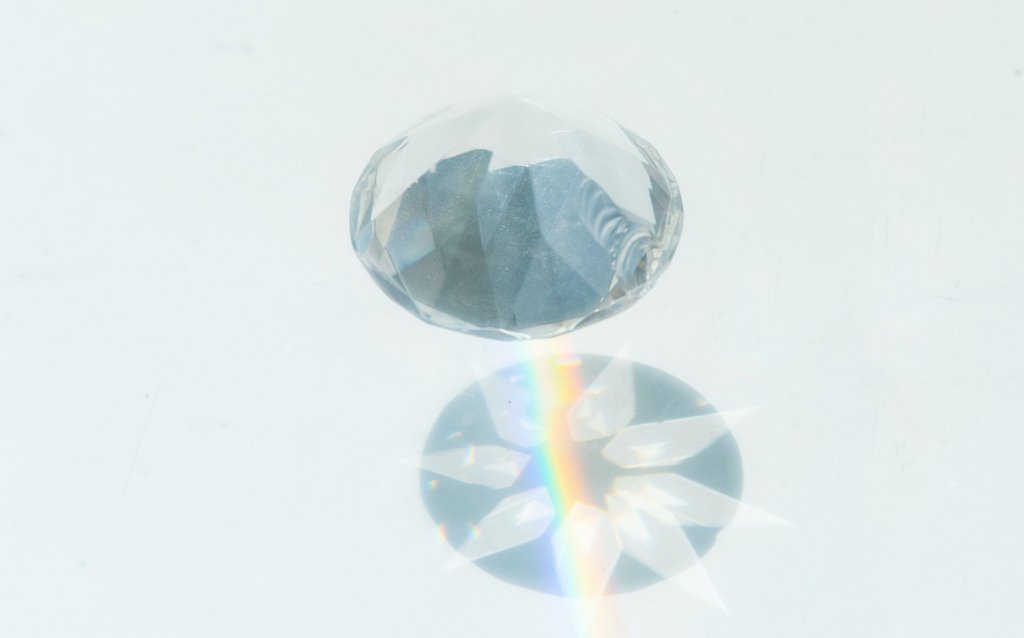
Aug 5, 2022 By Willyou.net
Score a Bigger Bling for Your Buck: Shop for Spready Diamonds!
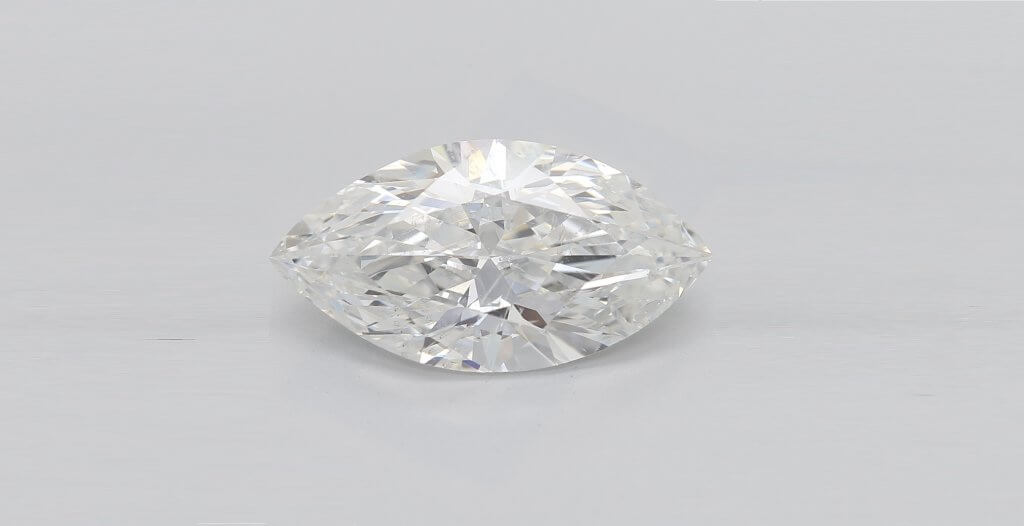
Aug 1, 2022 By Willyou.net
The Truth About Shallow Cut Diamonds

Jul 29, 2022 By Willyou.net
Understanding The Importance Of Diamond Depth And Table

Mar 26, 2022 By Willyou.net
The Science Behind Diamonds’ Shine
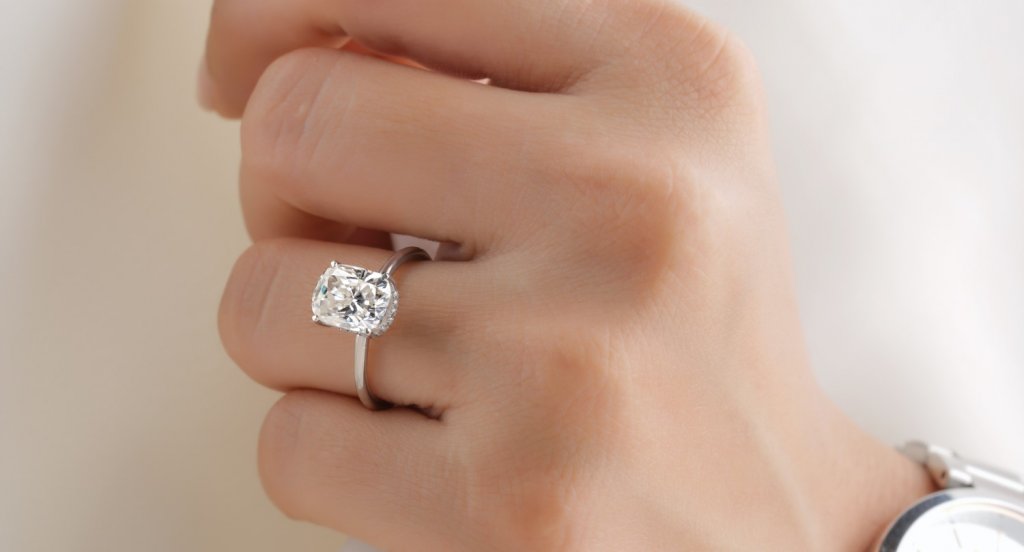
Mar 26, 2022 By Willyou.net
Key Information About Diamond Girdles
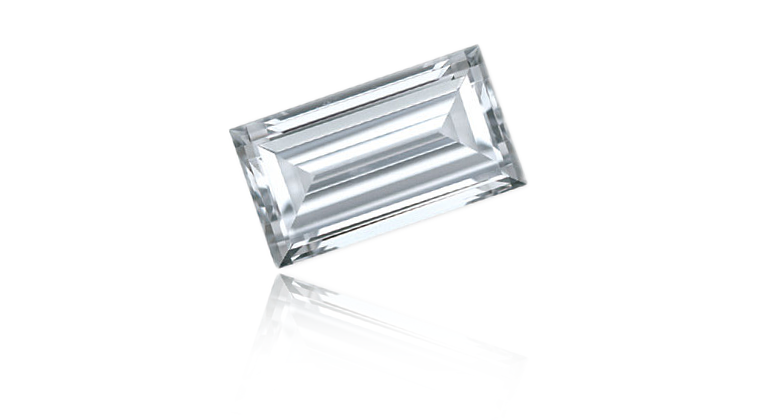
Mar 13, 2022 By Willyou.net
Got Baguette? Discover The Baguette Diamond Cut
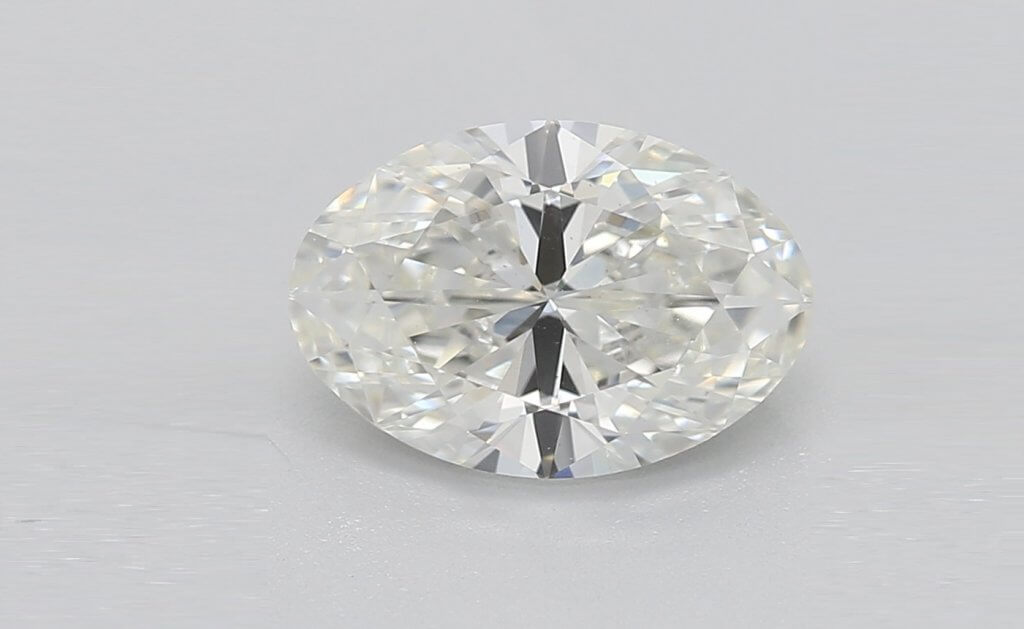
Mar 12, 2022 By Willyou.net
Diamond Bow Ties: Not As Glamorous As You Think
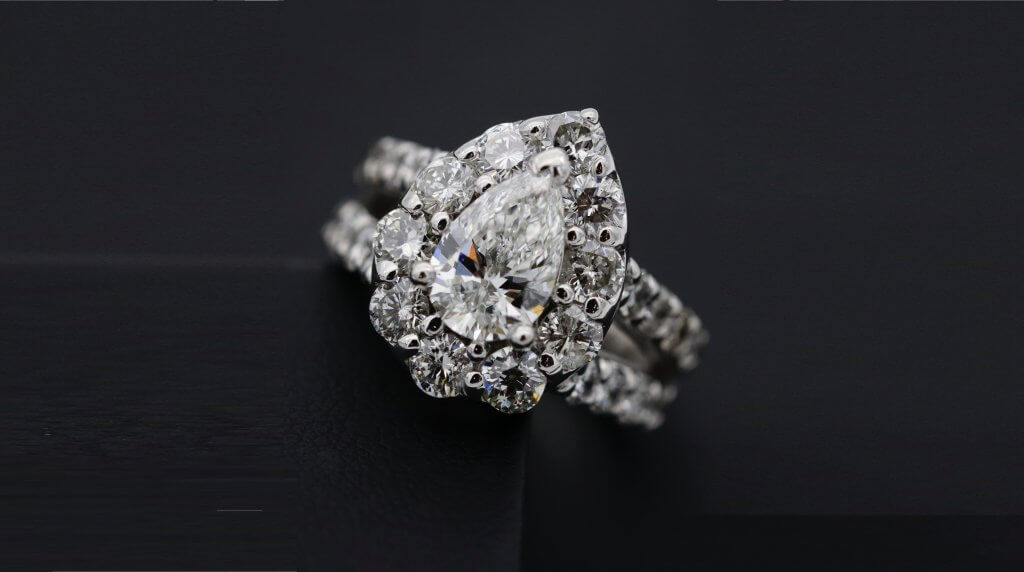
Sep 18, 2021 By Willyou.net
Diamond Symmetry Grading: The Essential Information
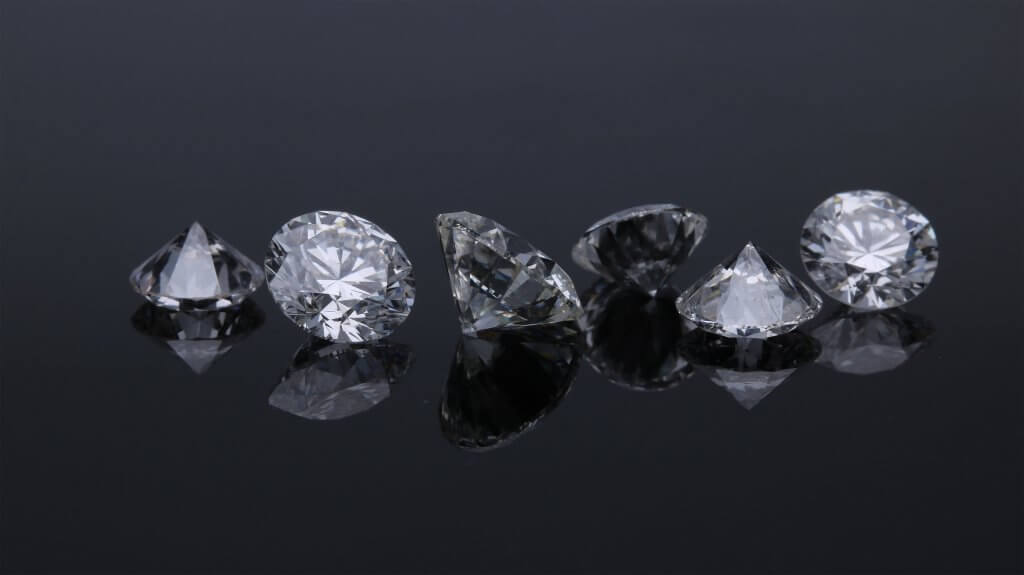
Sep 18, 2021 By Willyou.net
Understanding The Diamond Culet: The Ultimate Guide

Sep 18, 2021 By Willyou.net
This Diamond Cut Outsparkle The Rest – An Insider’S Guide
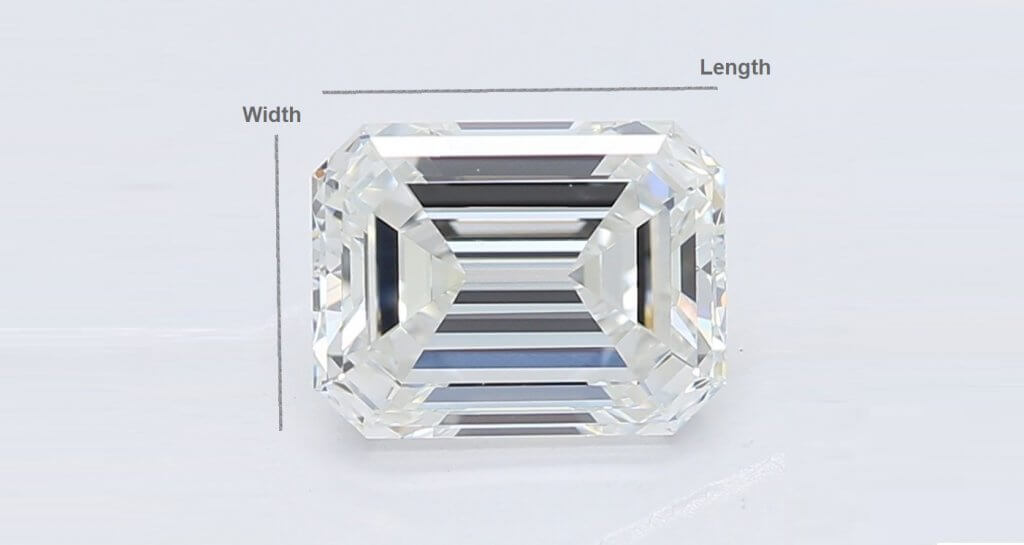
Sep 18, 2021 By Willyou.net
Master The Secrets Of Diamond Proportion (Ratio)
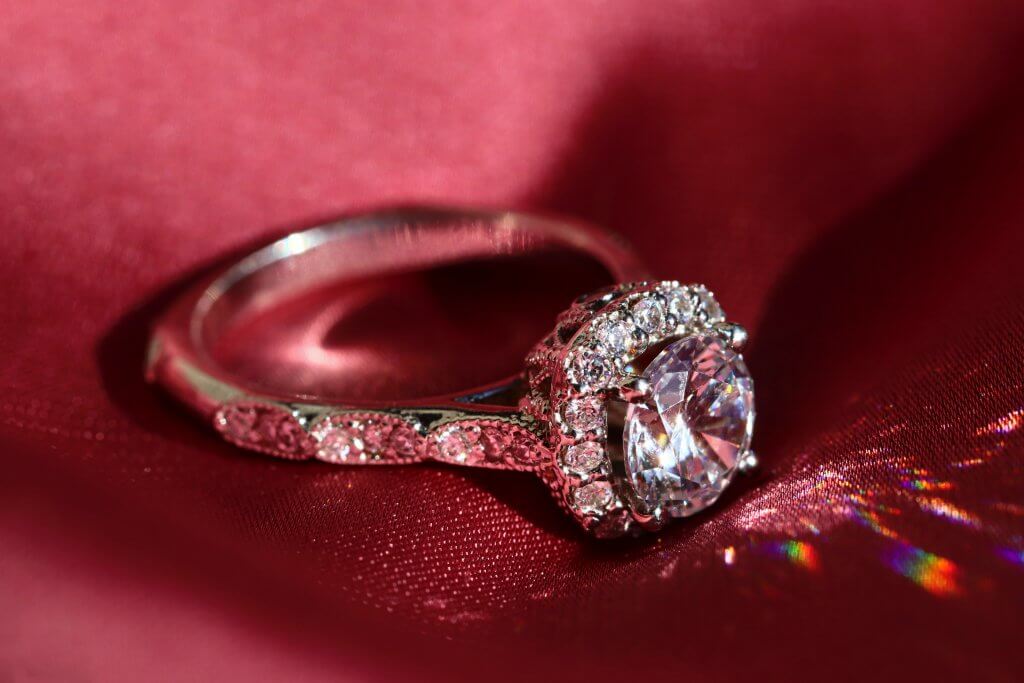
Sep 18, 2021 By Willyou.net
The Hidden Facts Of Diamond’S Polishing Grade
